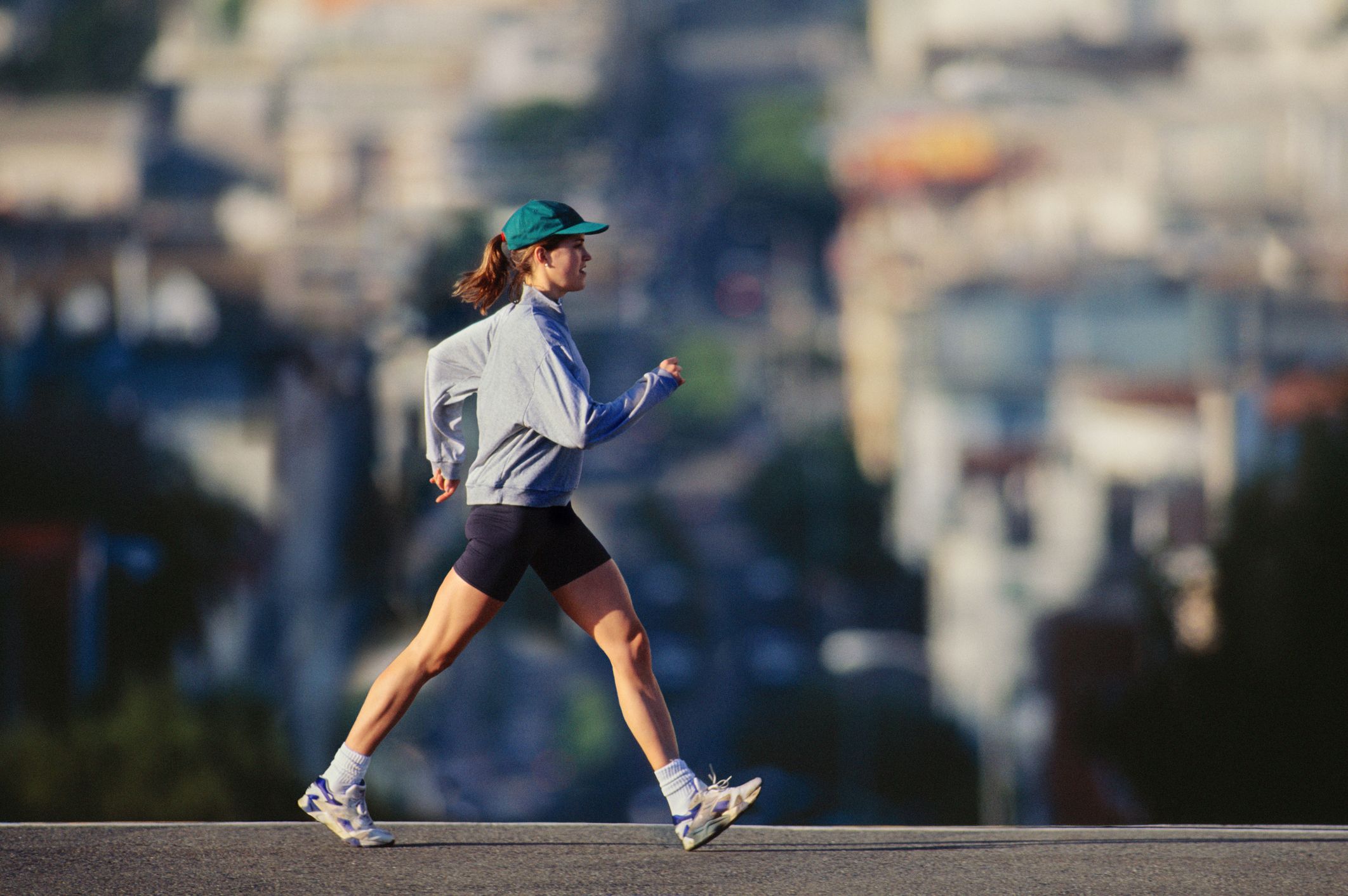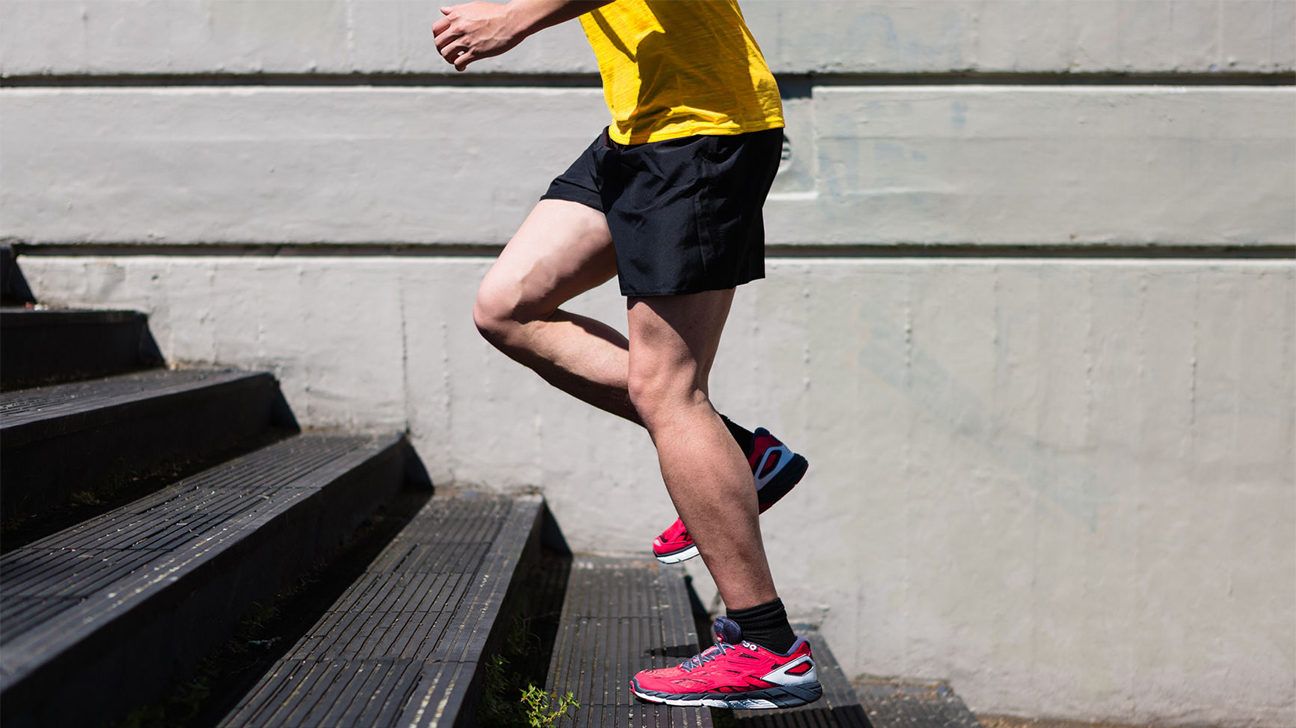Exemples d'exercices aérobiques pour vous faire bouger
L'exercice aérobique, aussi appelé cardio, regroupe des activités qui sollicitent les grands groupes musculaires, augmentent le rythme cardiaque et peuvent être pratiquées pendant une longue période. Il contribue à renforcer le cœur et les poumons, améliore l'endurance et est bénéfique pour la santé en général, agissant notamment sur la tension artérielle, la glycémie, l'humeur et le sommeil. Comme l'indique Harvard Health, faire de l'exercice régulièrement est la chose la plus importante que vous puissiez faire pour votre santé, contribuant à réduire les risques de maladies cardiaques, d'AVC, de diabète, de démence, et bien d'autres.
Les experts recommandent aux adultes de 18 à 64 ans de pratiquer au moins 150 minutes d'exercice modéré ou 75 minutes d'exercice intense par semaine, ou une combinaison des deux. Il est important de répartir cette activité sur la semaine.
Marche rapide
La marche est l'un des exercices d'aérobie les plus simples à intégrer à votre routine quotidienne. Nul besoin d'équipement particulier ni de salle de sport : vous pouvez la pratiquer presque partout. Pour intensifier vos marches, essayez la marche rapide ou la marche d'effort. Cela contribuera à améliorer votre condition cardiovasculaire. Visez un rythme où vous respirez plus fort que d'habitude et où vous pouvez parler, mais pas chanter.

Commencez par marcher pendant 10 à 20 minutes à un rythme confortable (environ 5 à 6 km/h pour la plupart des gens). Utilisez les points de repère locaux pour vous guider : marchez deux pâtés de maisons lentement, puis un pâté de maisons rapidement, et répétez l’exercice. Pour augmenter légèrement la difficulté, essayez de marcher sur des pentes douces ou avec un sac à dos.
En cours d'exécution
La course à pied est un excellent moyen d'intensifier vos entraînements. Elle sollicite principalement les muscles des jambes, mais aussi ceux du tronc et des bras. C'est un choix idéal pour un exercice aérobique.

Essayez d'alterner marche et course : courez lentement pendant 1 minute, puis marchez pendant 2 minutes ; répétez cet enchaînement 8 à 10 fois. La plupart de vos courses doivent être suffisamment faciles pour vous permettre de parler pendant l'effort. Ajoutez quelques courtes accélérations ou des côtes une fois par semaine. Portez de bonnes chaussures et courez sur des surfaces plus souples comme des pistes ou des sentiers à mesure que votre condition physique s'améliore.
Monter les escaliers
Monter et descendre des escaliers est un excellent moyen de faire de l'exercice cardio sans trop solliciter vos articulations. Trouvez un escalier que vous pouvez monter et descendre régulièrement pendant 15 à 30 minutes. Vous pouvez en trouver un chez vous, dans un immeuble, au travail, ou même dans les gradins du stade de football de votre lycée.

Essayez de monter les escaliers par courtes périodes de 5 à 10 minutes. Montez un ou deux étages, puis redescendez pour vous reposer. Tenez-vous bien droit pendant la montée et appuyez-vous légèrement sur la rampe si besoin.
Adaptez votre allure à votre condition physique. Si vous êtes essoufflé rien qu'en montant les escaliers, ralentissez. Au fur et à mesure de votre entraînement, vous pourrez accélérer. Bientôt, vous pourrez peut-être monter et descendre les escaliers plusieurs fois en courant.
Cours d'aérobic
Il s'agit de séances guidées et rythmées par la musique (aérobic douce, step, cardio-danse, cardio-kickboxing, etc.).

Vous pouvez commencer par des cours faciles ou à faible impact. Concentrez-vous sur la fluidité des mouvements et ne vous souciez pas de la perfection des pas.
Natation
La natation est un excellent exercice, doux pour les articulations mais qui fait travailler tout le corps. Pour commencer, il vous faudra des lunettes de natation et, si vous avez les cheveux longs, un bonnet de bain peut aussi être utile.

Si vous nagez depuis un certain temps, vous pouvez combiner le crawl avec d'autres nages pour augmenter la difficulté. Si vous débutez, choisissez une nage qui vous permette de parcourir toute la longueur du bassin. Ensuite, essayez de nager le plus de longueurs possible en faisant le moins de pauses possible.
Commencez par nager 10 minutes, trois à cinq jours par semaine. Chaque semaine, ajoutez cinq minutes à votre temps de nage jusqu'à pouvoir nager 30 minutes sans interruption.
Le cyclisme
Le vélo est similaire à la marche car il s'intègre facilement à votre routine quotidienne.Vous pouvez utiliser un vélo pour faire vos courses ou aller au travail. Assurez-vous de choisir un vélo adapté à votre taille. Il est conseillé de faire appel à un professionnel pour que le vélo soit correctement réglé. Cela peut contribuer à prévenir les blessures dues à des problèmes musculaires et articulaires.

Pour rendre le vélo plus stimulant, essayez d'aller plus vite ou de rouler dans des zones vallonnées. Ces changements augmenteront votre rythme cardiaque et solliciteront davantage les muscles de vos jambes. Portez toujours un casque lorsque vous faites du vélo, même pour une simple balade dans votre quartier.
Dansant
Toute danse qui vous permet de bouger constamment, comme la Zumba, la salsa, la danse en ligne, le hip-hop, ou tout simplement danser dans votre salon sur vos chansons préférées.

Choisissez 3 ou 4 de vos chansons entraînantes préférées, d'une durée totale d'environ 10 à 15 minutes. Assurez-vous qu'elles aient un rythme régulier et que celui-ci s'accélère ou devienne plus rythmé au fur et à mesure.
C'est agréable et convivial – deux bonnes raisons de persévérer – et on peut souvent le pratiquer à une intensité modérée sans avoir l'impression de faire un entraînement.
Tennis ou pickleball
C'est un sport de raquette qui implique des mouvements rapides, des changements de côté et de courtes pauses.

Pratiquer un sport comme le tennis ou le pickleball peut être une alternative agréable à l'entraînement en solitaire. Ces jeux impliquent des efforts brefs et intenses qui font travailler le cœur. Jouer avec d'autres personnes permet de rester motivé et encourage à se surpasser.
Corde à sauter
Sauter à la corde est un exercice cardio facile qui améliore la coordination. Pour commencer, prenez une corde à sauter et trouvez un espace dégagé. Faites passer la corde au-dessus de votre tête, et lorsqu'elle retombe à vos pieds, sautez par-dessus.

Vous pouvez sauter pendant 10 à 20 secondes, puis vous reposer pendant 40 à 50 secondes. Répétez cet enchaînement 10 fois. Ensuite, essayez de sauter pendant 30 secondes et de vous reposer pendant 30 secondes, puis 45 secondes de sauts et 15 secondes de repos. Veillez à atterrir en douceur et sans bruit.
C'est une activité énergisante, facile à transporter et qui fait gagner du temps ; même des séances d'entraînement brèves augmentent votre rythme cardiaque et font travailler les muscles des mollets et des cuisses tout en améliorant la coordination.
Pourquoi l'exercice aérobique est bon pour le corps
L'exercice aérobique est bénéfique pour la santé physique et mentale. Il renforce le cœur et les poumons, ce qui contribue à améliorer l'endurance et la force musculaire. Ces bienfaits physiques permettent de rester actif et d'éviter les chutes et les blessures.
L'exercice aérobique permet de brûler à la fois des glucides et des graisses en augmentant le rythme cardiaque et en le maintenant plus longtemps que de nombreux autres types d'exercice.
Les personnes qui font régulièrement de l'exercice ont moins de risques de développer une maladie cardiaque et ont tendance à vivre plus longtemps. Elles sont également moins sujettes à l'hypertension et au diabète de type 2, et leur taux de cholestérol est généralement plus bas.
L'exercice aérobique peut également contribuer à améliorer la santé mentale en réduisant les symptômes de la dépression et de l'anxiété. Les personnes atteintes de maladies chroniques qui pratiquent une activité physique régulière bénéficient souvent d'une meilleure qualité de vie.
Êtes-vous en zone aérobie ?
Votre fréquence cardiaque permet de déterminer si un exercice est aérobique. La zone de fréquence cardiaque aérobique se situe entre 70 % et 80 % de votre fréquence cardiaque maximale. Cette zone est également appelée zone 3 parmi les cinq zones de fréquence cardiaque.

Un excellent moyen de le mesurer est d'utiliser une montre, un cardiofréquencemètre ou une application. Pour des mesures précises et fiables, essayez le Moniteur de fréquence cardiaque Coospo, qui présente un indicateur lumineux LED intégré Elle affiche votre zone de fréquence cardiaque actuelle en temps réel, vous permettant ainsi de savoir instantanément si vous êtes en zone aérobie sans même regarder votre téléphone ou votre montre. Vous pouvez ainsi vous entraîner plus intelligemment, rester motivé et suivre vos progrès.










